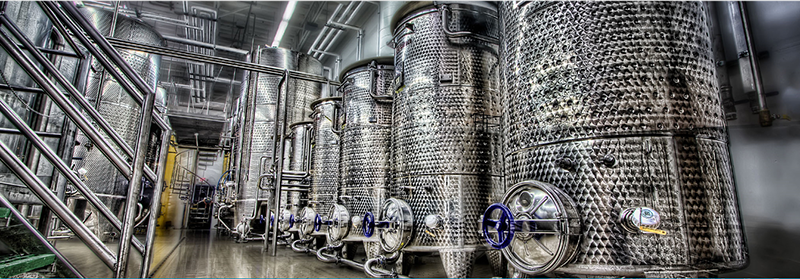Organic Kombucha (under the license of Voelkel from Germany)
Like other foodstuffs, the effect of raw material is determinative in the final product quality. The more the quality of raw material is, the better the taste and properties of Kombucha is. So, in order to produce Kombucha with such a long list of therapeutic properties, Arasp company imports Kombucha Culture from Germany continuously and the other raw materials such as green tea, black tea and brown sugar are free from any chemical pesticide, genetic changes and other illegal and unhealthy compounds. The organic black and green tea used in making Kombucha are produced based on international organic standards and lack any chemical color and essence. The organic brown sugar is also without any industrial additives such as sulfur dioxide, phosphoric acid, calcium hydroxide and active carbon. While these chemicals are used in producing white sugar. Kombucha has gained organic certificate. Arasp company produces probiotic and nutritious Kombucha organically under the license of the most reputable organic beverages producers in Germany (Voelkel company) by brand name of Froods
Kombucha history
The fermented tea Kombucha, has gained fame and popularity amongst the fans of healthy nutrition all over the world and in Iran. The researchers have no common idea about the history and origin of this ancient miraculous tea. But most of them believe that Kombucha has been developed about 206-221 B.C. in Manchuria, northern China, for the first time and then has been introduced to Japan, Korea, India and Russia. Others believe that Kombucha has its origin in Garsak, Russia.
In the early 1920, a Japanese researcher, named Dr. Pan Pen, during his researches in the inhabitants of mountainous Caucasus, concluded that other than climatic and genetic conditions, continuous use of Kombucha is the main reason of the life span over 110 years. The results also applied to the rural people of Bakutaya (Siberia), Tibet and Spain who drank Kombucha continuously and lived more than 110 years. These people are unfamiliar with some diseases such as TB, indigestion and cancer (1). Dr. Pan Pen has mentioned most of the properties of Kombucha in his reports (2).
Generally speaking, the immigrants of of Asia and Eastern Europe introduced Kombucha to the Westerners. Before the Second World War, its use was common in Japan, India, Russia and Germany; but diminished during the war because of the shortage of tea and sugar (the medium of Kombucha). During 1960 and 1970, it was reused as an antidote against undesirable habit of nutrition. The western media proposed this based on the researchers, like Dr. Rudolf Sklener.
He studied medicine in the university of Prague and faced by Kombucha in a monastery. He cultivated Kombucha during the Second World War and reported his observations during 1960 which promoted people’s awareness about Kombucha.He used Kombucha for the treatment of Diabetes, high blood pressure, digestive disorders, rheumatism and gout and even in cancer. His therapeutic methods were successful and many doctors followed him. Today, this healthy and natural beverage is used extensively in Europe and USA, so that there is some association related to Kombucha.

Kombucha is mentioned by some names, such as: Kombucha, Kombuchai, Kombucha,and Kombuchai.In other languages, it is mentioned by other names: Russian flower, Russian jelly, Russian mother, Japanese fungus, Japanese sponge , Extraordinary fungus, Miracle fungus, Champion fungus, Longevity fungus, Divine tae and Gout jelly. In France, they call it ”Longevity Elixir”. The German researcher, Gunther Frank has mentioned 80 other names in other languages (3).
But, the question remains about its appellation. Some say that a Korean medicine, named Kombu, has used a miraculous beverage, similar to tea, for treating Japan Emperor (Ikio), and they combined Kombu with tea (Chai) and called it Kombucha. Afterwards, it was used by Samorai warriors frequently.
On the other hand, on the coastal regions of Japan, A sea plant named Kombu (brown moss)was used by Japanese like tea. Maybe they combined Kombu with Chai (tea) and called it Kombucha.
(1) Harald W. Tietze; Kombucha – The Miracle Fungus, 1996, p 8
(2) Günther W. Frank; Kombucha, p. 135
(3) Günther W. Frank; Kombucha – Das Teepilz-Getränk, 18. Edition, 2014, p. 111-113
What is Kombucha?
In fact, it is a special symbiosis of Bacteria and yeast which is similar to the fungus (flat, smooth and slimy).The mass is placed on the tea surface as a thin layer. In consecutive fermentation processes, a newer layer is added. The sweet tea is fermented for 7-14 days and the result is Kombucha.

In his book, ”Kombucha, an ancient salutary and therapeutic tea”,Dr. Helmut Golz has mentioned many active bacterias and yeasts in the process. These yeasts have the role of balancing the body metabolism, blood cleaning, strengthening immunity system and the kidney poison excretion.
The other useful organic materials result from Kombucha fermentation are: Glucuronic acid, Gluconic acid, Acetic acid, Carbonic acid, Lactic acid, Oxalic acid, Malic acid, Butyric acid, Propionic acid, Ascorbic acid, Succinic acid, Nucleic acid, Itaconic acid, Antibiotic, Fructose, Citric acid (Vitamin C), Vitamin D, group B vitamins: B1 (Thiamin), B2 (Riboflavin), B3 (pyridoxine), B6, B12 (Cobalamin), B9 (Folic acid), and some enzymes such as: Invertase, Amylase, Catalase, Saccharase (1).
As mentioned before, Kombucha is a polysaccharide layer of yeasts and bacteria. At first, the yeasts of the medium break down Sucrose which result to Glucose and Fructose. Fructose is converted to Glucose by isomerisation which are then consumed by yeasts and they in turn produce organic acids such as Glucuronic acid, Lactic acid, Acetic acid, Gluconic acid, etc.
(1) .Sieverset al.; Microbiology and fermentation of balance in a kombucha beverage obtained from tea fungus fermentation, Systematic and Applied Microbiology 18 , 1996, 590-594
.Mayseret al.; The yeast of spectrum of tea fungus Kombucha. Mycoses, 34, 1995, 289-295
.Toeh, A. L., Heard, G. & Cox, J.; Yeast ecology of kombucha fermentation, J. Food Micribiology, 95, 2004, 119 -126
.Steinkraus, K. H.; Indigenous Fermented Food, Tea Fungus/kombucha, Marcel Dekker Inc. New York, 1996, 493-496

